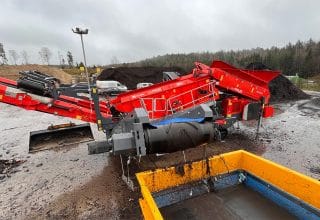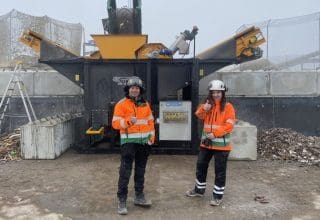Energy recovery
Sustainable energy recovery
Basically, we see energy recovery as a good option when there is no other way to recycle the material. It is important that the waste that is then incinerated has a high energy content and that the parts of the waste that do not have it are separated before incineration. This is to ensure that energy recovery is as sustainable as possible.
Separation and recycling of plastics and wood
Today it is easy to separate and recycle large parts of the stone, plastic and metal often found in the waste with the help of Norditek's solutions. This creates opportunities for more efficient energy recovery because it gives the fuel a high energy value and low ash content. Also under development is the technology for recycling certain valuable plastics and wood.

Our solution for recycling wood waste
Norditek's solution for wood waste provides a cleaner fuel with less content of stone, glass, concrete, etc. A cleaner fuel creates significantly less ash, which helps boiler owners, for example, to reduce costs in their ash management and makes energy recovery more sustainable. Since stone and glass do not burn, it is inefficient to put them in the boiler. Our Instead, the solution gives the material owner higher revenues on all final products.
Norditek's solutions that create a higher level of energy recovery can be found today in many places throughout the country. Sweden is currently the country in Europe that extracts the most energy per ton from waste. This is partly due to the higher energy value of the waste that goes to incineration.
Waste incineration uses the energy bound in the material but is only appropriate when the material cannot be reused or recycled. After incineration, a residue, such as slag, remains. It consists of materials that are not combustible or do not evaporate during combustion, known as inert materials. Examples of such materials are glass, porcelain, iron scrap, gravel, etc.

Recycling of metals
With Norditek's solution for recovering more metals from slag ash, it is possible to recover more metal, both magnetic and non-magnetic. Getting the metal out provides a high value in itself while also contributing to more efficient energy recovery at the other end.
Metal recycling is an area where a lot of energy can be saved. Aluminum is a good example as this recycling saves 95% of the energy otherwise needed to create new aluminum.
Which waste is energy recovered?
The waste used as fuel in CHP plants is, for example, from household waste, i.e. what they have not sorted. There is also waste from construction and various industries. There are also materials that cannot be recycled even if they are disposed of at recycling stations. This applies to some plastics, but it can also be paper and cardboard that has already been recycled many times.
Energy recovery from residual waste
To reduce waste, we can consume less, reuse things and recycle more materials. According to the waste hierarchy, waste should be prevented first and recycled second. Norditek has the technology to better sort out fractions, which increases material recycling. Of all the household waste that, for example, goes to incineration to become energy, a large part of the waste can instead be sorted out to go to material recycling, composting or anaerobic digestion.
The waste that remains is called residual waste and can no longer be reused or recycled. It is only then that energy recovery becomes an option to harness the energy from the residual waste.



